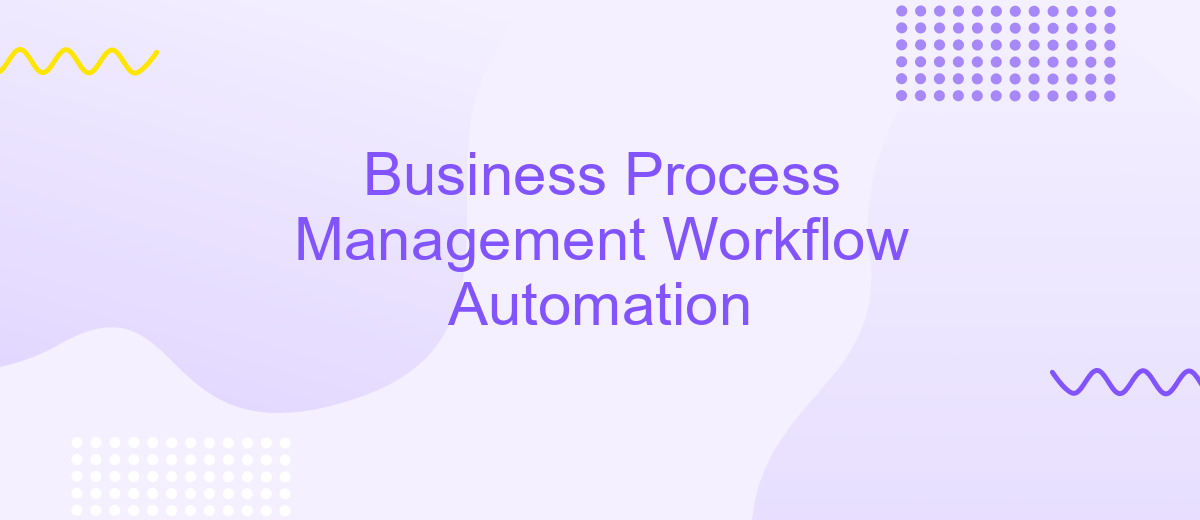Business Process Management Workflow Automation
In today's rapidly evolving business landscape, efficiency and agility are paramount. Business Process Management (BPM) Workflow Automation stands at the forefront of this transformation, streamlining operations, reducing costs, and enhancing productivity. By automating repetitive tasks and optimizing workflows, organizations can focus on strategic initiatives, ensuring they remain competitive and responsive to market demands. Discover how BPM Workflow Automation can revolutionize your business processes.
Introduction
Business Process Management (BPM) and Workflow Automation have become essential components for modern enterprises seeking efficiency and agility. These technologies streamline operations, reduce manual errors, and enhance productivity by automating repetitive tasks. By implementing BPM and workflow automation, organizations can focus on strategic initiatives and improve overall performance.
- Streamlined operations
- Reduced manual errors
- Enhanced productivity
- Focus on strategic initiatives
- Improved overall performance
One of the critical aspects of BPM and workflow automation is the integration of various systems and applications. Tools like ApiX-Drive facilitate seamless integration, allowing businesses to connect their existing software and automate data transfer between platforms. This not only saves time but also ensures data consistency and accuracy across different systems. By leveraging such services, companies can achieve a higher level of automation and operational efficiency.
Benefits of Workflow Automation

Workflow automation significantly enhances operational efficiency by reducing manual interventions and minimizing errors. By automating repetitive tasks, businesses can streamline their processes, allowing employees to focus on more strategic activities. This not only improves productivity but also accelerates project timelines, leading to faster delivery of products and services. Additionally, automation ensures consistency and compliance, as standardized processes are less prone to human error and deviations.
Another key benefit of workflow automation is the seamless integration of various business applications and services. Tools like ApiX-Drive facilitate these integrations, enabling data to flow effortlessly between different systems. This interconnectedness allows for real-time updates and better decision-making, as all relevant information is readily accessible. Moreover, automated workflows can be easily scaled to accommodate business growth, ensuring that operations remain smooth and efficient even as the company expands. Overall, workflow automation is essential for modern businesses looking to stay competitive and agile in a rapidly evolving market.
Challenges in Implementing Workflow Automation

Implementing workflow automation in business processes can be a complex endeavor, fraught with numerous challenges. These challenges can arise from various aspects, including technological, organizational, and human factors. Understanding these challenges is crucial for a successful implementation.
- Integration Issues: Seamlessly integrating new automation tools with existing systems can be difficult. Services like ApiX-Drive can help bridge this gap by facilitating smooth and efficient integrations.
- Resistance to Change: Employees might resist adopting new automated workflows due to fear of job loss or discomfort with new technology.
- Data Security: Ensuring data security and compliance with regulations can be a significant hurdle, especially when dealing with sensitive information.
- Cost: The initial investment in workflow automation tools and the ongoing maintenance costs can be substantial, which might deter some businesses.
- Complexity of Processes: Highly complex and non-standardized processes can be challenging to automate effectively.
Addressing these challenges requires a strategic approach, including thorough planning, employee training, and leveraging specialized integration services like ApiX-Drive. By doing so, businesses can overcome the hurdles and fully realize the benefits of workflow automation.
Best Practices for Successful Workflow Automation

Implementing successful workflow automation requires careful planning and execution. Start by thoroughly analyzing your existing processes to identify bottlenecks and areas that can benefit from automation. It's essential to involve key stakeholders and team members in the planning phase to ensure that the automated workflows align with business goals and user requirements.
Once the processes are identified, choose the right tools and technologies that will best suit your needs. Platforms like ApiX-Drive can help streamline integrations between various services, making it easier to automate workflows without extensive coding knowledge. Ensure that the tools you select are scalable and can adapt to future business needs.
- Map out the entire workflow before automating to avoid missing critical steps.
- Start with simple processes and gradually move to more complex ones.
- Regularly monitor and review automated workflows to ensure they are functioning as intended.
- Provide adequate training to your team to maximize the benefits of automation.
Continuous improvement is key to successful workflow automation. Gather feedback from users and stakeholders to identify any issues or areas for enhancement. By following these best practices, you can ensure that your workflow automation is effective, efficient, and aligned with your business objectives.
Conclusion
In conclusion, Business Process Management Workflow Automation represents a significant advancement in streamlining organizational operations. By automating repetitive tasks and optimizing processes, companies can achieve higher efficiency, reduced errors, and increased productivity. The integration of such automation tools allows for real-time monitoring and adjustments, ensuring that business processes remain aligned with strategic objectives. Moreover, the use of platforms like ApiX-Drive can further enhance these benefits by providing seamless integration with various applications and services, thereby simplifying the automation setup and maintenance.
As businesses continue to evolve in a rapidly changing environment, the adoption of workflow automation will be crucial in maintaining a competitive edge. The ability to adapt and refine processes quickly through automation not only drives operational excellence but also fosters innovation. Therefore, investing in robust automation solutions and integration services like ApiX-Drive can empower organizations to navigate complexities and achieve sustainable growth. Ultimately, Business Process Management Workflow Automation is not just a trend but a vital component of modern business strategy.


FAQ
What is Business Process Management (BPM) Workflow Automation?
How can BPM Workflow Automation benefit my business?
What are some common features of BPM Workflow Automation tools?
How do I start implementing BPM Workflow Automation in my business?
Can BPM Workflow Automation be customized for specific business needs?
Apix-Drive is a simple and efficient system connector that will help you automate routine tasks and optimize business processes. You can save time and money, direct these resources to more important purposes. Test ApiX-Drive and make sure that this tool will relieve your employees and after 5 minutes of settings your business will start working faster.

